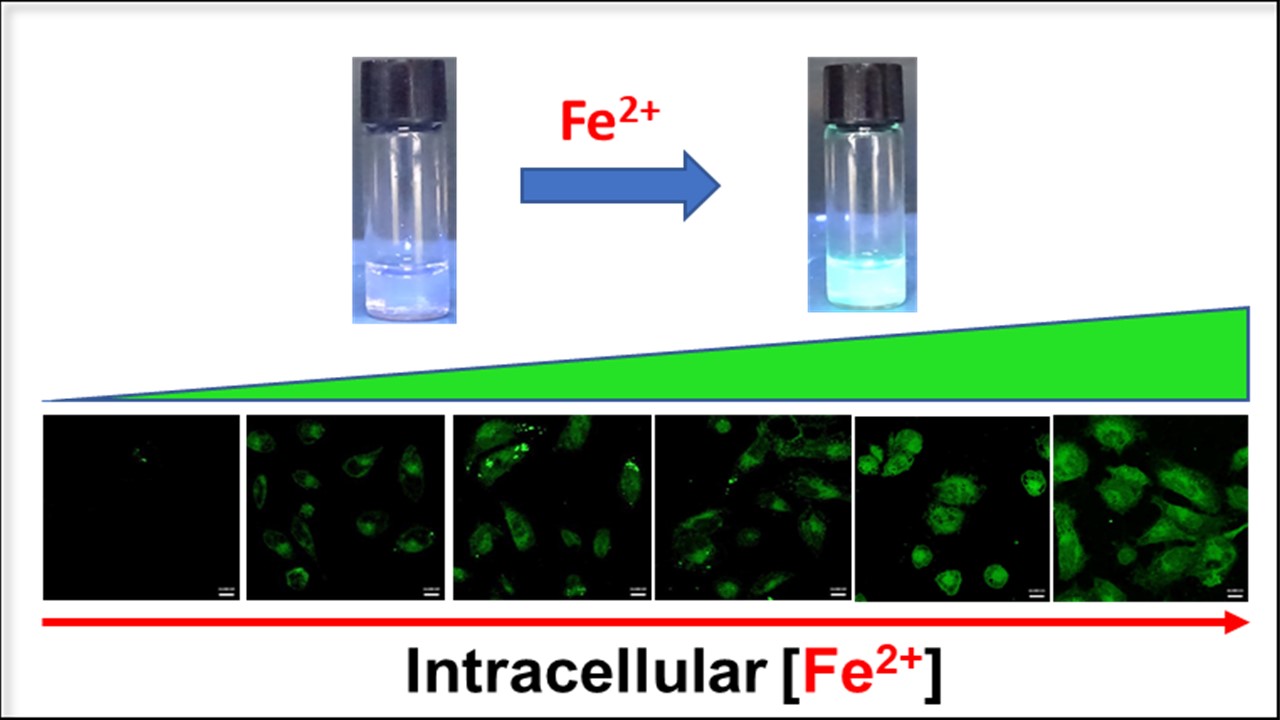

Iron overload in human body, one of the most hazardous toxic conditions, has been associated with multiple diseases including neonatal liver diseases, neurodegeneration including Alzheimer’s and Parkinson’s disease, Friedreich’s Ataxia, cancer etc. Selective and sensitive detection of intracellular Fe2+ can lead to a better understanding of disease prognosis. In addition, recently, Ferroptosis has been proposed as one of new cell deaths. Ferroptosis is studied as non- apoptotic cell death caused by the accumulation of lipid peroxidation products and an imbalance in redox homeostasis, primarily due to increased levels of reactive oxygen species (ROS). BARC has developed a simple one-step kit that contains a novel turn-on fluorescent probe that enables live-cell fluorescent imaging of intracellular Fe2+. The method is effortless, rapid and cost-effective, and has immense applications in cell biology and cancer research.
Iron overload in human body, one of the most hazardous toxic conditions, has been associated with multiple diseases including neonatal liver diseases, neurodegeneration including Alzheimer’s and Parkinson’s disease, Friedreich’s Ataxia, cancer etc. Selective and sensitive detection of intracellular Fe2+ can lead to a better understanding of disease prognosis. In addition, recently, Ferroptosis has been proposed as one of new cell deaths. Ferroptosis is studied as non- apoptotic cell death caused by accumulation of lipid peroxidation products and an imbalance in redox homeostasis, primarily due to increased levels of reactive oxygen species (ROS). BARC has developed a simple one-step kit that contains a novel turn-on fluorescent probe that enables live-cell fluorescent imaging of intracellular Fe2+. The method is effortless, rapid and cost-effective, and has immense applications in cell biology and cancer research.
Introduction
Iron is one of the most abundant metal on earth crust, and is an essential element in human body participating in several physiologically important processes, e.g. oxygen transport, electron transport and various enzymatic processes. Because of redox toxicity of iron, the uptake, transport and storage of iron is very tightly regulated. However, there are instances where, due to both primary and secondary reasons, excess iron accumulates in cells leading to generation of labile iron pool (LIP). The overload of intracellular LIP is particularly detrimental owing to its redox toxicity arising out of its participation in Fenton reaction leading to the generation of reactive oxygen species (ROS). Therefore, detection of intracellular LIP not only allows to track the physiological processes in which the labile iron takes part, but also serves as an important avenue to detect iron overload. Moreover, sensing iron in live cells leads to identification of cell death mechanism like ferroptosis etc.
Fluorescence turn-on, sensitive and selective sensor for LIP offers advantages over other methods in terms of higher sensitivity and lower background, and hence are preferred in live-cell imaging. However, such sensors are scarce. Towards this, BARC has developed a cost-effective KIT comprising of a turn-on fluorescence probe with high selectivity and high fold turn-on response. Treatment of live cells with this KIT immediately provides a bright fluorescence based on the amount of LIP present in the cell, which can be visualized and measured. This technology is cheap, user-friendly and simple to adopt.
This cost-effective “A kit for detection of intracellular iron (Fe2+) in live cells” can detect the Fe2+ levels, with a limit of detection as low as 0.85 µM.
RAW MATERIALS
EQUIPMENTS
Space
POWER
MANPOWER
